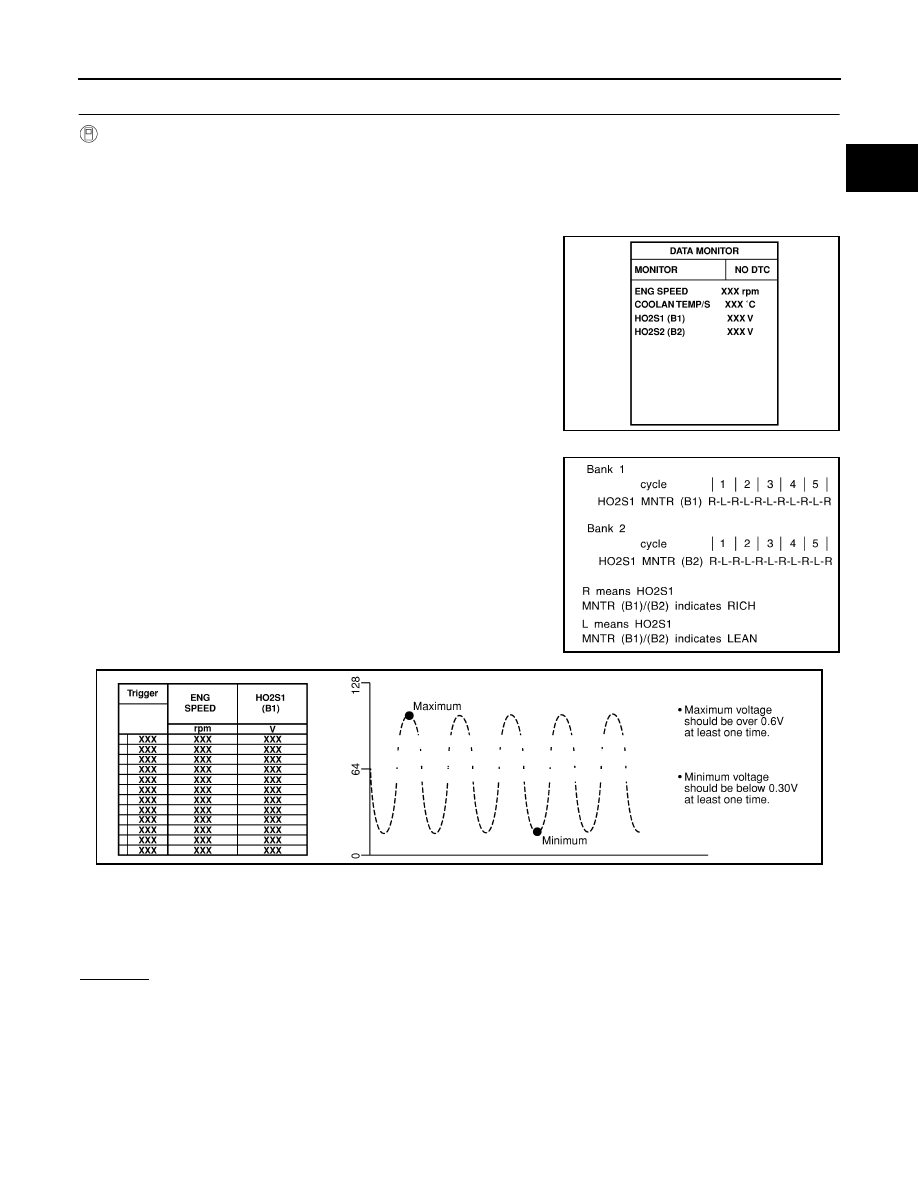Nissan Frontier D22. Manual - part 479

DTC P1144, P1164 HO2S1
EC-1019
[VG33E]
C
D
E
F
G
H
I
J
K
L
M
A
EC
6.
CHECK HEATED OXYGEN SENSOR 1
With CONSULT-II
1.
Start engine and warm it up to normal operating temperature.
2.
Select “MANU TRIG” in “DATA MONITOR” mode with CONSULT-II, and select “HO2S1 (B1)/(B2)” and
“HO2S1 MNTR (B1)/(B2)”.
3.
Hold engine speed at 2,000 rpm under no load during the following steps.
4.
Touch “RECORD” on CONSULT-II screen.
5.
Check the following.
–
“HO2S1 MNTR (B1)/(B2)” in “DATA MONITOR” mode changes
from “RICH” to “LEAN” to “RICH” more than 5 times in 10 sec-
onds.
5 times (cycles) are counted as shown below.
–
“HO2S1 (B1)/(B2)” voltage goes above 0.6V at least once.
–
“HO2S1 (B1)/(B2)” voltage goes below 0.3V at least once.
–
“HO2S1 (B1)/(B2)” voltage never exceeds 1.0V.
CAUTION:
●
Discard any heated oxygen sensor which has been dropped from a height of more than 0.5 m (19.7
in) onto a hard surface such as a concrete floor; use a new one.
●
Before installing new oxygen sensor, clean exhaust system threads using Oxygen Sensor Thread
Cleaner tool J-43897-18 or J-43897-12 and approved anti-seize lubricant.
OK or NG
OK
>> GO TO 8.
NG
>> Replace malfunctioning heated oxygen sensor 1.
SEF967Y
SEF647Y
SEF648Y